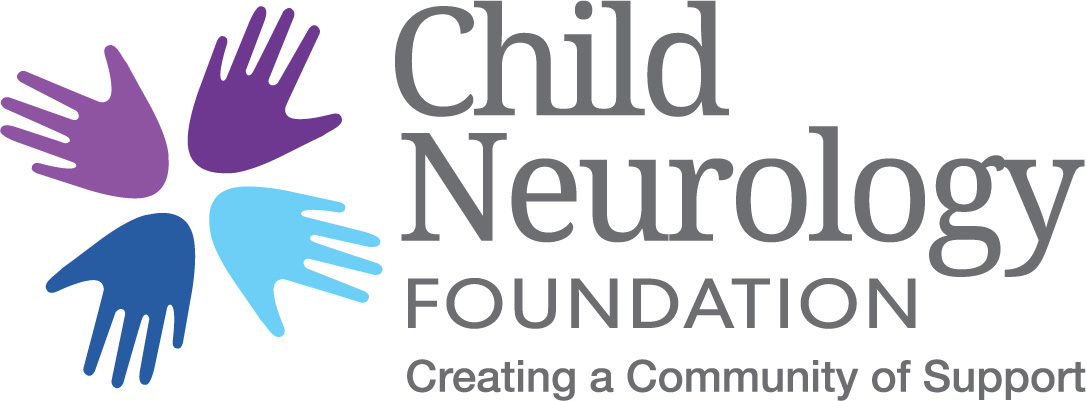September 29, 2021
SHORTENING THE DIAGNOSTIC ODYSSEY
Presented At The 2021 Child Neurology Society Annual Meeting
Shortening The Diagnostic Odyssey is a crucial topic to the child neurology community. Nearly half of the families who responded to CNF’s 2021 Needs Assessment Survey were still searching for a diagnosis three or more years after their child’s symptoms first began. And 44% said they had dealt with a misdiagnosis at some point during their journey.
It is critical to get to a diagnosis sooner so that parents, caregivers, and physicians can begin the process of finding possible treatments and make more informed decisions about next steps in care for children living with a neurologic condition.
Due to its importance, CNF’s Board Of Directors decided to focus on Shortening The Diagnostic Odyssey as a multi-year Annual Education Initiative.
CNF will continue to explore the Diagnostic Odyssey with a focus on epilepsy in 2022 and we will also be looking into improving engagement in clinical trials. Watch our newsletters for announcements on these and our other activities in 2022.
Feedback from our sold-out symposium was incredibly positive
“Outstanding topic and great speakers.”
“Thank you! It was really helpful for my daily practice.”
“Excellent and well-designed symposium. Great resource for clinicians.”
“Thank you for the wonderful presentations!”
“Very informative. Gene therapy for rare genetic disorders is very exciting!”
“Great information and presentations!”
“Love the deeper dive into genomics”
“BRILLIANT talks!!”


Questions and Answers From The 2021 CNF Symposium
PART 1:
UTILIZING THE LATEST INFORMATION AND TECHNOLOGY TO DIAGNOSE AND TREAT NEUROLOGIC CONDITIONS
How a Whole Genome Sequencing Opportunity Impacted 25 Children, Caregivers and Their Medical Providers - Anup Patel, MD Ohio State University College of Medicine Nationwide Children’s
Anup Patel, MD,
Ohio State University College of Medicine, Nationwide Children’s
Dr. Patel is board certified in neurology with special qualifications in child neurology. In addition, he is board certified in epilepsy and clinical neurophysiology. He is a medical director of clinical outcomes, accreditation, and regulatory compliance at Nationwide Children’s Hospital and is the director of the complex epilepsy clinic. He is an associate professor for neurology and pediatrics at Nationwide Children’s Hospital and The Ohio State University College of Medicine in Columbus, Ohio.
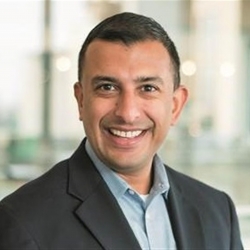

How much is CNF working with ACNN to partner in getting the word out to the underserved communities? And to developmental pediatricians and NPs?
This is a great question. We are currently finalizing the CNF strategic plan for 2022-2025, which will help inform our plan to reach those in underserved communities. We also plan on having the symposium material available and other resources on the CNF website which is assessed by developmental pediatricians and APPs.
Are there diagnostic algorithms available?
There are a few published manuscripts that address this idea. In addition, CNF has partnered with a group to utilize the Child Health Improvement through Computer Automation (CHICA) System that helps guide providers to order proper testing using clinical decision support.
Why was the MORC2 mutation missed on WES but caught on WGS? Mutation location?
At the time of his initial exome sequencing test in 2013, MORC2 had not been implicated in any disease. The neurologist shared this result with the lab that conducted his ES testing 2019. They investigated and determined that the variant was filtered out due to use of a different transcript for annotation.
By getting this genetic testing to the primary providers does this mean bypassing local pediatric neurologists?
I would love to see more data on the WGS cases. Most head-to-head comparisons of WES and WGS have shown minimal if any improvements in diagnostic yield. Specifically, what types of pathogenic/likely pathogenic variants were found and how did WGS specifically catch them? Was there a comparison of prior WES to WGS including reanalysis of WES data with up-to-date pipelines and variant annotation?
We are not at liberty to share this information at this time. However, most, if not all, patients had some form of genetic testing (often WES) prior to getting the WGS. A team is in the process of writing up these cases for an abstract, which will present the findings in aggregate in a way that respects patient privacy but will provide this type of information in more detail.
If I have a child with similar problems and all tests are negative, who do I contact and how?
CNF partnered with Illumina which provided the WGS testing at no cost. They would be a place to contact as they have some studies looking into transcriptomics, proteomics, etc. The Undiagnosed Diseases Network does a lot with multiomics (testing beyond WGS). In addition, many academic institutions are doing WGS for research purposes and can be a good resource.
Do you think that CRISPR will change the way we approach rare neurological disorders?
It may; however, currently using AAV vectors seems most promising as was done in the development of Zolgensma for SMA. Specificity (avoiding off-target effects) is still an issue with CRISPR in the research laboratory setting, and this would have to be considered if CRISPR technology will be used to treat human disease.
Can you comment on potential immunogenicity of some of these therapies and how we mitigate these issues?
Do treatment with stem cells work? If they do, for what kind of disorders this treatment should be considered?
As genetic testing becomes more readily available, I am identifying more patients with likely pathogenic variants. I manage them symptomatically of course, but I have difficulty knowing what to do next in terms of evaluation or even if I should be pursuing further evaluation. In learning about the evolution of precision medicine for many of these genetic conditions, I am beginning to feel that I should be referring them for further evaluation to determine if they could qualify for such a therapy. What are your recommendations for the clinical pediatric neurologist in these scenarios? Is there a centralized listing of centers offering precision medicine that I should be referring to for consideration of such therapies?
As of now, I would recommend checking on clinicaltrials.gov as all gene therapy trials are listed there. In addition, resources such as the CNF website and other such organizations may have links to such studies. Finally, I recommend reaching out to the nearest academic center to know which trials they are participating in or may be in the near future. CNF will continue to do its best to inform and educate.
Getting from Gene to Treatment and Disease-Specific Clinical Trials - Erika Augustine, MS Kennedy Krieger Institute
Erika Augustine, MS,
Kennedy Krieger Institute
Dr. Augustine is the Associate Chief Science Officer at Kennedy Krieger Institute. Her clinical research program focuses on advancing therapeutic development for rare pediatric neurological disorders, with emphasis on comprehensive clinical phenotyping and trial design. Her current NIH-funded work examines trial readiness of clinical outcome measures in the neuronal ceroid lipofuscinoses (Batten diseases) and ethical principles related to sharing research data with research participants.
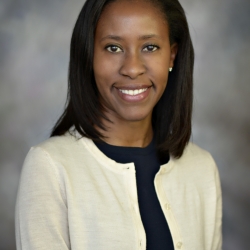

How do we narrow the gap between approved orphan drugs and institutional knowledge?
Narrowing the gap from approval to common practice is a critically important issue. Making use of venues like professional society meetings for sharing information about newly approved compounds as well as peer-reviews publications on the studies and data that led to approval are key initial steps. As trial sites move from a research setting to clinical care using approved compounds, opportunities for sharing information across sites and establishing and publishing best practices create a path to generalizable institutional knowledge.
We are struggling with approval for rare and new treatments that have not had published data but have FDA approval. It is typically listed under experimental treatments and not covered. With more thought on oversight could this also be addressed?
Certain drugs may be FDA approved for specific conditions or indications, but remain investigational for non-labeled indications. In this case, the drug needs to be tested for both efficacy and safety in the new disease population, as well. Some treatments that are approved by FDA for a specific disease-based indication will be covered by insurance companies for that specific indication only.
How are therapies going to be managed with phenotype variations of mutations within specific genes? Example individuals with SCN1A mutations who don’t have Dravet syndrome. Would there be different ASOs? I admit that I don’t understand this technology very well.
Treatments using anti-sense oligonucleotides are developed in a manner that may be specific to mutation location and type within a specific disease-causing gene. Sometimes, phenotype is strongly determined by genotype. In other cases, individuals with the same genotype can manifest different phenotypes. There could be some circumstances where an ASO treatment would be beneficial for people with the same gene variants, but different phenotypes. There are other circumstances where despite the same genetic variant, the ASO could prove more or less effective for treating specific symptoms, making it less useful for specific phenotypes. These are questions that need to be addressed for each clinical program in development.
Can you talk about the framework set up for design and consideration of ethics around N if 1 trials at your institutions?
For all research, Institutional Review Boards are key partners in research oversight and upholding participant safety. Many institutions also have a separate group of Ethics specialists who may collaborate in the design and completion of n-of-1 studies. For n-of-1 studies involving gene-targeted therapies, in addition to the IRB, there may be other partners related to development and manufacturing of the investigational drug, collaboration to determine what elements of using an investigational drug are part of research and what parts constitute care as well. Research administration and clinical operations groups weigh in on the financing of such studies, and typically these studies are for conditions that require complex multi-disciplinary care – providers who also can be important partners in study design and selection of study assessments.
What resources are available for families in rural areas / unable to get to large medical centers in the cities? Is there a way to utilize the virtual world and help get the care needed to outlying suburbs / rural areas?
Telehealth provides a potential opportunity to decrease barriers to accessing expert knowledge about specific rare diseases. There are, however, state licensure limitations on the practice of medicine across state lines. The Interstate Compact creates a pathway for some physicians to practice in multiple states. In addition, a number of medical centers have established Second Opinion programs that enable review of specific diagnostic or therapeutic questions, based on existing clinical assessments or evaluations. National efforts such as the Undiagnosed Diseases Network (mentioned above) may also be helpful in this regard.
How do we consider the ethical aspect of justice of access to genetic testing? Access to such high cost tests (or the luxury of inter-state travel to large academic institutions) appears inequitably available to those with means.
Equitable access to diagnosis and treatment remain substantial barriers around the world. Fortunately, there are many diagnoses that can be achieved without genetic testing. However, it must be acknowledged that precise diagnosis via genetic testing is becoming the standard of care for many conditions, and for some conditions, is the only route to specific diagnosis. Costs of genetic tests are declining, testing companies are increasingly developing patient access programs to defray costs, and there are now industry-sponsored broad genetic testing panels for conditions like epilepsy, movement disorder, lysosomal storage diseases, and other groups of conditions, which can be ordered at no cost.
Observation and question re: Myotonic Dystrophy type1, which is not rare and often has symptoms in childhood that are very non-specific with relative delay in diagnosing child/juvenile onset phenotypes. Also given genetic complexity it seems that progress in research towards intervention is somewhat “behind” compared to other more rare diseases. What are your thoughts regarding how we should be screening, diagnosing pauci symptomatic forms. What is on the horizon for disease specific intervention for DM1?
Thoughts on trial measures for diseases either relatively static profound disability?
Specific trial measures – motor, sensory, cognitive, social, global functioning, quality of life, etc. – should be considered with cross-disciplinary input. Standard cognitive assessments, for instance, may be impacted by motor dysfunction, and motor performance tasks may be imprecise if the task is not well understood for cognitive reasons. When possible, established, validated tools should be used.
What is the regulatory perspective on the UBDRS or a component/subscale as a clinical trial outcome measure?
What is the best resource for us child neurologists at smaller academic centers to develop a registry or link to a larger database?
Local guidance from Institutional Review Boards can be helpful in the initial approach to development of registries once the scope, goals, and intended use of the registry are established. National organizations and networks, including advocacy organizations, are also excellent sources of information during the development of a registry or to learn about what relevant registries exist. Potential resources include the National Organization for Rare Disorders and the Rare Disease Clinical Research Network.
Any thoughts on how to efficiently develop new clinical outcome measures for trials in conditions without good natural history data?
Good natural history data are paramount to development of novel measures based on strong understanding of how the disease unfolds and key signs/symptoms to measure. Equally important is an understanding of aspects of the disease impacting and stated as priorities to patients and families. Some resources related to clinical outcome measure development can be found through the FDA COA program information page: https://www.fda.gov/drugs/drug-development-tool-ddt-qualification-programs/clinical-outcome-assessment-coa-qualification-program and the FDA Division of Clinical Outcome Assessment https://www.fda.gov/about-fda/center-drug-evaluation-and-research-cder/division-clinical-outcome-assessment-dcoa
Possibilities with N of 1 Trials?- Christelle Moufawad El Achkar, MD Harvard Medical School, Boston Children's Hospital
Christelle Moufawad El Achkar, MD
Harvard Medical School, Boston Children's Hospital
Dr. Achkar is an attending physician in the Epilepsy Genetics Program and the division of Epilepsy and Neurophysiology at Boston Children's Hospital. Her main clinical and research interests include the connection between epilepsy and neurodevelopmental disorders in genetic epilepsies. She is closely involved in designing and conducting clinical trials for the treatment of rare developmental epileptic encephalopathies, as well as personalized therapy for ultra-rare epilepsies and neurodegenerative disorders including N-of-1 Anti-Sense Oligonucleotide trials.
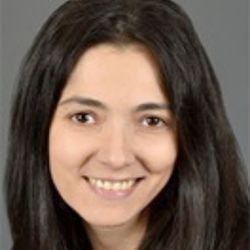

How does one address treatment options for rare diseases for patients who cannot travel to distant centers for financial and other reasons? What will be the role of community neurologists for advanced genetic diagnoses and therapies now and in the future?
This is certainly a major limiting factor in terms of healthcare access. There are several options to pursue. We should empower community physicians and medical centers to encourage their patients to. participate in treatment trials. We should promote information about emerging trials and work on finding the financial resources for families to travel (which may be available through trial sponsors). Depending on the nature and frequency of treatment and assessments required, we can consider telemedicine for some visits along with good communication between specialist guiding the therapy trial and the local healthcare team.
Are there good references to all of n of 1 pragmatic clinical trials in child Neurology that's in pipe line. (Similar to quinidine in KCNT1)
Besides what is in the literature, good resources are child neurologists and researchers working on specific disorders, foundation websites for specific disorders, as well as clinicaltrials.gov. Connecting with researchers/authors involved in particular genes can also help find many of the unpublished/studies in pipeline in this quickly evolving field.
Can you talk about cost of these tailored medications in the N1 trials? Are these treatments applicable to other patients?
It definitely depends on the type of treatment. Drug repurposing (of available FDA-approved drugs) typically involves costs similar to other drugs. Drug development and delivery of experimental therapeutics, such as N of 1 anti-sense oligonucelotides, involve costs related to research, infrastructure, production, and delivery that can be in the range of millions of dollars. If a treatment of this nature were applicable to more patients, the cost per patient would of course be lower. Until now, most N of 1 treatments have been developed to demonstrate proof of concept and feasibility using an IND/compassionate use route. The plan is to take them to Phase I and II trials to include more patients.
How is the cost of n of 1 trials typically managed? Foundations? Family initiated crowd sourcing? Grants?
Some foundations have been interested in supporting these endeavors. Academic centers have also supported these efforts at least partially, as well as some industries collaborating with academic centers. Access to funding for these treatments raises issues related to access to care and resources, as discussed below.
Can you talk about the framework set up for design and consideration of ethics around N if 1 trials at your institutions?
In addition to requiring an IND from the FDA for compassionate use of a new compound for a rare and sometimes progressive disease, there are several internal/institutional committees involved in oversight and support at every step of trial design and implementation, including hospital and department leadership. There are mechanisms in place for standard drug trials, including regulatory approval (IRB) and practical considerations (e.g., by an experimental trials unit team). Additional oversight for N of 1 treatments may derive from a hospital oversight committee for personalized experimental therapeutics and/or an ethics committee regarding the specific treatment under consideration as well as issues around patient selection.
In your experience, how do social determinants of health impact N of 1 trials?
Social determinants have a major impact at every step of these trials and therapies. Starting with diagnosis, many patients and communities do not have access to specialists or diagnostic resources. At the level of therapy, knowledge of available therapies or advocacy for new therapies to be considered or designed is not widely available. Physical access to tertiary centers and thus experimental therapies, and cost, are not available to all patients. This is an area that needs more dedicated attention broadly—from access to care and diagnosis to genetic testing and therapies.
What mechanisms do you foresee for practitioners who identify a rare genetic variant to pursue pre-clinical studies and ultimately an N- of- 1 trial? Particularly those in smaller institutions?
I think this process should rely on collaboration between institutions, as these disorders are very rare. Even the largest institutions do not have all the animal models or the specific resources for different types of pre-clinical studies. For example, a diagnosis is made, and there is a plausible mechanism for a potential drug (whether already available or in need of design/production), the first step would be to reach out to the experts in that particular disorder nationally and internationally to look at their available data, and look into collaboration on utilizing their available resources. If no such resources are available and a lot of work needs to be done from scratch, then teaming up with parent groups and organizations for funding of pre-clinical work can be a good start.
Elaboration for unknown leukodystrophy, Gene Dx panel negative. NIH trial for myelin disorders bio repository project any other centers or researchers for the N of 1 trial for unknown type of leukodystrophy?
Regarding N of 1 - is it possible to use the paradigm with natural history as control?
In the limited circumstances for which the natural history is tightly defined, it may be possible. NCL and SMA are examples of using historical controls as the comparison group for actively treated patients. It seems that all N-of-1 trials rest on pre-post treatment comparisons, which is most valid if the trajectory of disease is clearly defined and can be shown to stabilize or improve with treatment.
The issue of sustainability of N of 1 genetic modification interventions for biotech firms for years long interventions is paramount from corporate standpoint. How have they addressed this to date?
PART 2:
SUPPORTING FAMILIES THROUGH THE JOURNEY
How to Handle the Various Journeys - Heather Mefford, MD, PhD St. Jude Children's Research Hospital
Heather Mefford, MD, PhD,
St. Jude Children's Research Hospital
Dr. Mefford is a Full Member in the Center for Pediatric Neurological Disease Research. She runs a research laboratory dedicated to gene discovery in pediatric disease, with a major focus on pediatric epilepsies. Her work uses cutting edge genomic technologies and has helped define the genetic landscape of epileptic encephalopathies with studies reporting novel copy number variants and numerous novel disease-causing genes.
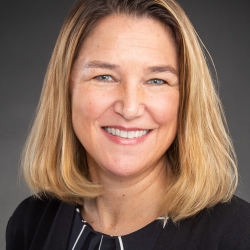

How can we motivate physicians to look for ultra-rare diseases, especially those that have therapies in development when some physicians do not believe they can diagnose a patient with a rare disease in their lifetime?
What is the opinion regarding when a physician does not make a genetic diagnosis in a child with a specific condition and then holding them legally responsible when a second child is born with the same condition? Specifically, how much time should there be between first reports of genetic associations with conditions vs. considering the genetic association standard of care?
I am unable to comment on the legal question as I do not have that expertise. It is difficult to keep up with new reports of genetic testing, though more and more, “new” genes are added to testing panels / analysis quite rapidly. This is why reanalysis or re-testing is important. The timing is a moving target, but generally we recommend considering reanalysis if it has been >1 yr or so.
How quickly should one jump to genomic sequencing? I ran the 2 findings of myoclonus and VSD through diagnostic software and PURA was in the top results without even knowing the facial features.
Exome or genome sequencing has been recommended as a first or second-tier test for congenital anomalies (birth defects), developmental delay, and intellectual disability. In general, it should be considered early in the diagnostic workup if possible. If there is a very specific diagnosis suspected and a specific test, that could be done first. For nonspecific diagnoses, exome is often more efficient.
When in the diagnostic odyssey should genetic testing be performed? Should this be a standard for all patients soon after diagnosis?
How do we move to investigate the epigenetics involved in the disease etiology for the 60% of patients who do not have positive exome or genome studies?
What will the next gen testing be (Multi gene interactions, or epigenetics)?
Can whole genome sequencing pick up ring chromosomes? How should we be using karyotypes in the diagnostic process?
Long-read sequencing may identify ring chromosomes and is another test that may be offered more frequently in the clinical setting; karyotypes should be considered (i.e., not forgotten!) in the diagnostic process, probably after genome/exome unless there is a specific phenotype that suggests a ring chromosome, then it should be done earlier.
What are your recommendations for addressing the number of potential variants of unknown significance which may be identified in WGS?
What do you do with VUS where it's potentially pathologic and the proposed phenotype matches part of the patient's phenotype.
With new WES is it useful to do CMA still or it picks up the big deletions and duplications too?
Whole exome sequencing has plateaued in terms of its pickup rate for various reasons, so many centers need to think about RNAseq and other high throughput methods to work through VUS. They may also have to consider cellular assays.
Agree. We also need to gain experience predicting the effect of noncoding variants from genome sequencing. Implementing cellular assays can be difficult, as different assays (and cell types) may be required for different genes. Ideally, doing prospective studies in research labs (e.g. massively parallel reporter assays, other approaches) to determine the effect of any potential variant in a gene ahead of time would benefit interpretation. Agree that RNAseq can be an important additional test.
I didn’t hear you mention mtDNA. Is your WES typically including it? Has anyone studied missed mito diagnosis by not including it?
How do we test for post translation changes as a cause for the disease? Are post translation changes somatic and these cannot be determined on genetic testing?
How would we order WGS when WES and microarray are non-diagnostic but we have a high suspicion of neuro-generic disease?
Is there evidence supporting skipping chromosomal microarray and doing WES directly?
What is the biggest barrier geneticists are facing in regards to testing for rare diseases, besides insurance coverage?
It seems that we already struggle with variants of uncertain significance in exome sequencing, how can we make sense of the added complexities of whole genome sequencing variants? What can be done to support pursuing biochemical extrapolations of these variants to help confirm/refute pathogenicity?
Panel Discussion: How to Effectively Collaborate to Get Answers
- Krista Harding National Multiple Sclerosis Society
- Anne T. Berg, PhD Ann & Robert H. Lurie Children’s Hospital of Chicago Neurology
- Louise Bier, MS, CGC Columbia's Institute for Genomic Medicine
- Annapurna Poduri, MD, MPH Harvard Medical School, Boston Children's Hospital
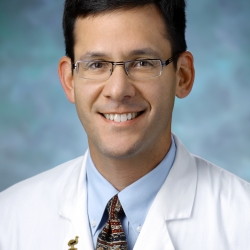

Adam Hartman, MD
National Institute of Neurological Disorders and Stroke
Dr. Hartman is currently a Physician at NINDS/NIH, serving as a Program Director in the Division of Clinical Research. He oversees the Child Neurology clinical research portfolio at NINDS, providing guidance for the development and implementation of clinical research, developing initiatives aimed and reducing neurological disease burden, and promoting and coordinating research in Neurology.
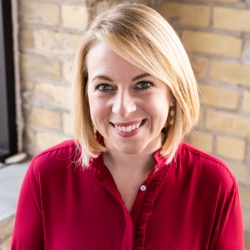

Krista Harding,
National Multiple Sclerosis Society
Ms. Harding has worked with the NMSS for nearly a decade fostering connection, education and support opportunities for people affected by MS, with particular passion and focus on the unique needs and challenges of children and families affected by the disease. In addition to leading the Society’s MS Adventure Camp programming, she has worked in various capacities with children impacted by MS and their families.


Anne T. Berg, PhD
Ann & Robert H. Lurie Children’s Hospital of Chicago
Dr. Berg’s current research centers on defining the outcomes and priorities for rare and ultrarare neurogenetic diseases associated with epilepsy and advancing understanding of their natural histories and critical outcomes for design of efficient trials of novel precision medicine -disease modifying therapies. She played a pivotal role in focusing NINDS research priorities on the cognitive, developmental, and behavioral co-morbidities of epilepsy.
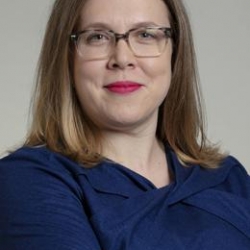

Louise Bier, MS, CGC
Columbia's Institute for Genomic Medicine
As a genetic counselor, Ms. Bier has worked at the interface of clinical care and genetics research, in the context of precision medicine. She has supervised the implementation of genomic research protocols across a variety of clinical areas including clinical genetics, neurology/epilepsy, and maternal-fetal medicine.
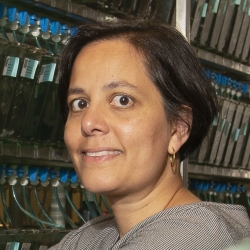

Annapurna Poduri, MD, MPH
Harvard Medical School, Boston Children's Hospital
Dr. Poduri is Professor of Neurology and Director of the Neurogenetics and Epilepsy Genetics Programs. Her laboratory team studies germline and somatic mosaic causes of epilepsy, models genetic neurodevelopmental epilepsies in zebrafish and other model systems, and strives for precision diagnosis and treatment for patients with epilepsy in concert with her clinical team.
In order to better characterize, diagnose and treat rare genetic neurologic conditions, is there any role to have tumor board style meeting within an institution or among institutions to plan next steps for testing, treatment, engaging in studies etc?
Yes! The current Undiagnosed Diseases Network includes a number of institutions that do exactly this (at the NIH site, our panel meets once/month). If the expertise is not represented on the board (which is rare but does happen), then other experts are pulled in to help. This has been a part of all these programs since their inception.
Why is the Undiagnosed Disease Network closing when there is still a strong need?
The Undiagnosed Diseases Network was conceived as part of an ongoing funding stream called the NIH Common Fund. This program is administered by the NIH Director’s Office. Projects are approved initially for five years of funding, which can be renewed only once. After that, the programs need to evolve into their own funding stream. That said, the NIH Institute Directors and their staff (in conjunction with the current network sites) are developing a long-term sustainability plan in recognition of the importance of this program. The funding burden needs to shift but the goal is for the main programmatic elements to be maintained.
Are there any non-disease specific commercial or academic organizations that are equipped for computational or in-vitro gene function and pharmacotherapy screening?
With a disproportionate number of genomes in population databases coming from people of European ancestry, it seems as though the yield of genetic testing is yet another area where we're going to see widening health disparities in the future. How do we mitigate this problem?
This is something that is very much on the radar screen for several NIH Institutes and other organizations. The NIH All of Us Program (aims to collect all sorts of biological and environmental data from a diverse population. Another important initiative that is supported by NIH and other research funders is called the H3Africa program. One of its goals is to sequence data from non-European populations. There are some repositories in Asia, as well.
I'm interested in developing scales for other rare Neuro genetic disorders, specifically Peliazeus Merzbacher disease. Do you know if anyone is working on scales similar to UBDRS?
In the development of new therapies, what is the role of costs? Several costs. The actual cost of the treatment. The cost of doing nothing. The cost of converting a severe disease, perhaps with early death to a moderate disease with a longer life expectancy but the need for continuing support? There could be other costs as well.
There are costs and consequences of any and every action. For example, what is a lethal disease is converted to a chronic disease and managed so that the person can go about his or her life. What if that person wishes to have children and can pass on this disease? Many of these questions are far beyond the purview of scientific studies and are better addressed in the realm of morals and values. I know these are important questions. I do not presume to have the answers.
What is the evidence for the cost effectiveness of whole genome or exome sequencing over a lifespan? Perhaps this could shift how insurance companies think about covering genetic testing?
Any thoughts on how to efficiently develop new clinical outcome measures for trials in conditions without good natural history data?
Anne Berg has been working with several parent-formed groups to advance this very goal. If you are interested, she gave a talk on this at the KCNQ2 summit in October. “Rare Disease – Rare Outcomes: What does better look like for children with KCNQ2-DEE?” The link will take you to all of the talks. Just scroll to find Anne’s.
Can you comment on parent driven or disease society driven and funded research? I worry that parents in a hurry to find treatments for terrible diseases may end up giving funds without realistic understanding of the best research possibilities.
Most disease advocacy organizations that support research do so with the advice of volunteer experts who provide peer review of research project proposals that enable the agency to make decisions about investing their hard-won resources into projects that have the best chances of impacting their goals. I can speak to how the National MS Society makes its funding decisions – we rely on the advice of leading scientists, physicians, and other experts from virtually every field related to MS to help us make decisions about which research projects and programs have the best chance of moving us closer to a world free of MS. The committee members review applications in terms of the significance of the project, the relevance of the project to MS, the approach, or methods to be used, the innovation of its concepts, the investigator’s qualifications and available resources, and suitability of the proposed budget. We also layer in a community review of projects to ensure their aims align with the concerns of people affected by MS. We also carefully monitor annual progress reports by funded investigators to make sure they stay on track, and we strongly encourage the publication of their findings in peer reviewed journals to move the field forward.
Upon ascertainment of a diagnosis, families often self-assemble via social media, sharing experiences. I question if valuable natural history information is being developed but not accessed by health care professionals. Is there a role for participation by providers/investigators in these processes? How might that work?
In the social media groups I’m aware of, participation is limited to only those who are personally impacted by the disease in some capacity and would likely not allow participation by healthcare professionals. However, there may be opportunity for discussion themes to be captured and shared. In this case, a healthcare advocacy organization might be an appropriate facilitator/moderator.
What are your thoughts on the role of increasing the number of rare diseases to newborn screen as a means of shortening the diagnostic odyssey and potentially providing early treatment options?
It’s an interesting thought, but I have some hesitation since the NBS system wasn’t really developed for this type of issue and would need to be carefully considered from many perspectives. For example, generally conditions for newborn screening have to meet certain criteria including that the conditions should have effective treatments available, which is unfortunately not the case for most genetic disorders. It would also be very complicated to interpret genetic data in these cases, as the ACMG variant classification criteria are designed for use in patients who are already suspected to have an underlying genetic condition. Lots to think about before such an idea could possibly be put into action.
If a patient has a VUS but neither parent has it, does it increase probability that VUS is pathogenic?
What can we do to help address the insurance obstacles, and what is biggest barrier geneticists are facing in regards to testing for rare diseases, besides insurance coverage? Do you have any tricks, key words or phrases or other suggestions for increasing the likelihood that insurance agrees?
If an insurance company denies the initial request, appeal with a peer-to-peer review. In terms of suggested phrases etc, given that insurance plans vary a lot from state to state, I would suggest reaching out a geneticist/genetic counselor in your area for advice — you can find a directory of GCs at nsgc.org. As a field, one thing we can do is to conduct systematic evidence reviews (example of one just done for epilepsy: Sheidley et al., Epilepsia, 2020) and develop and publush practice guidelines in partnership with professional societies. These types of publications provide demonstration of what the field considers to be standard of care.
Costs of WES & availability?
How are clinicians who utilize WGS/WES utilizing the immense amount of data generated when multiple genetic changes are identified? How are clinicians contending with ethical implications of identification of genetic mutations that could imply ALS, Huntingtons, or other such diseases?
Clinicians may keep a record of genes of interest and submit on GeneMatcher to be connected to other researchers who are interested and working on that gene. Generally, clinicians are not accessing the massive data files generated during WES/WGS, these are maintained at the lab and are available for re-analysis at the clinician request. (Note, each lab has different re-analysis policies — e.g., limiting it to one free reanalysis etc.)
Even when WES is performed, clinical labs employ variant filtration algorithms so that they are only curating & returning variants that have a potential connection to the presenting symptoms. (This is why it is important to accurately fill out the phenotyping section on genetic test requisitions.) Clinical labs would not return ALS, Huntington, APOE etc. unless such testing was specifically ordered. Clinics that specialize in these conditions will have detailed pre-testing counseling and evaluation procedures before ordering such testing.
The gnomad website looks great. A clinician would need some help in navigating this site. Is there a quick cheat sheet that can help?
I don’t have any that I’m familiar with, but found this one from the ClinGen Resource which looks promising: https://www.youtube.com/watch?v=s4eNR61GXXQ
With the growth of various techniques for WGS, will guidelines help patients and physicians choose the best option for various clinical scenarios? If so, how will the various methods be evaluated to choose the one with greatest predictive value?
Many groups are trying to develop guidelines around test selection, though as you can imagine these efforts often take a while to come to publication — and may not move as fast as the genetic technology. Genetic testing labs employ genetic counselors & other professionals who are available to discuss testing options with providers and ensure the most appropriate test is ordered.
Can you provide me with resources to be connected with genetic specialists?
For Genetic Counselors, NSGC’s Website
For Medical Geneticists, ACMG’s Website
For Neurogenetics experts: most tertiary hospitals will have a group or several groups within Neurology focusing on evaluation and treatment of genetic disorders.
Could you comment on panels and reanalysis? If you only have panel results, does it make sense to keep ordering new panels or just have the exome?
If you have already done a panel, additional panels may not be that helpful as they may have many overlapping genes. In general (noting there may be exceptions), I would probably consider exome next. Many labs will let you order a panel with reflex to exome if the panel is negative, which is efficient, avoids additional sample draws from the patient etc.
How do we handle the undetermined results from delivering the results to planning next steps?
Ideally, the fact that the testing might result in VUS would be discussed with a patient during the pre-test consent process, so they are prepared for such an outcome. I think it’s useful to talk about whether there may be candidate variants that the clinician and/or family want to submit to GeneMatcher or Matchmaker Exchange, as a way to connect with others interested in the same gene. Also talk about the next steps for clinical management in light of the VUS result — a genetic diagnosis may have changed some aspects of the management but there may be others that would stay the same.
If a patient has a VUS but neither parent has it, does it increase probability that VUS is pathogenic?
What education is needed for child neurologists to be able order, interpret, and provide the counseling needed for WES and GS?
There are many groups who offer seminars in genetics for non-genetics physicians. I suggest keeping your eye out for such courses — NHGRI may be a good place to start. Talks and workshops at professional meetings (e.g., American Epilepsy Society Genetics Workshop) are emerging to address the need for neurologists to learn more about the content and practice of genetics related to neurological disorders.
Behind the Seizures Brochure
The 2021 Education Initiative is supported by:
Believer Industry Partner


Industry Partners


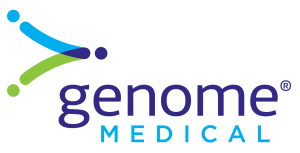











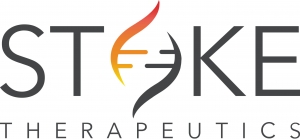





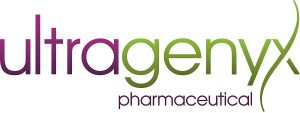



Believer Partner
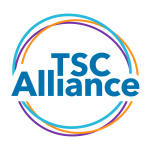

Activist Partners




Community Partners
Dravet Syndrome Foundation, FamilieSCN2A Foundation, GLUT1 Deficiency Foundation, Lennox-Gastaut Syndrome Foundation, and Phelan-McDermid Syndrome Foundation.
